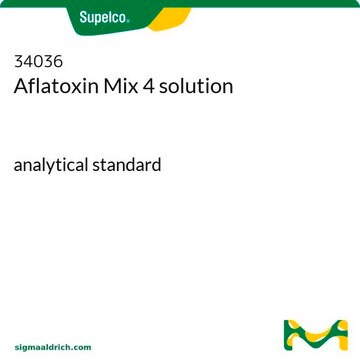A1556
15-O-Acetyl-4-deoxynivalenol from Fusarium graminearum
Synonym(s):
15-Acetoxy-3α,7α-dihydroxy-12,13-epoxytrichothec-9-en-8-one
About This Item
Recommended Products
form
powder
Quality Level
storage temp.
2-8°C
SMILES string
CC(=O)OC[C@]12[C@H](O)C(=O)C(C)=C[C@H]1O[C@@H]3[C@H](O)C[C@@]2(C)[C@]34CO4
InChI
1S/C17H22O7/c1-8-4-11-16(6-22-9(2)18,13(21)12(8)20)15(3)5-10(19)14(24-11)17(15)7-23-17/h4,10-11,13-14,19,21H,5-7H2,1-3H3/t10-,11-,13-,14-,15-,16-,17+/m1/s1
InChI key
IDGRYIRJIFKTAN-HTJQZXIKSA-N
Looking for similar products? Visit Product Comparison Guide
Related Categories
General description
Application
Biochem/physiol Actions
signalword
Danger
hcodes
Hazard Classifications
Acute Tox. 2 Oral - Acute Tox. 3 Dermal - Acute Tox. 3 Inhalation
Storage Class
6.1A - Combustible acute toxic Cat. 1 and 2 / very toxic hazardous materials
wgk_germany
WGK 3
flash_point_f
Not applicable
flash_point_c
Not applicable
ppe
Eyeshields, Faceshields, Gloves, type P2 (EN 143) respirator cartridges
Choose from one of the most recent versions:
Certificates of Analysis (COA)
Don't see the Right Version?
If you require a particular version, you can look up a specific certificate by the Lot or Batch number.
Already Own This Product?
Find documentation for the products that you have recently purchased in the Document Library.
Customers Also Viewed
Our team of scientists has experience in all areas of research including Life Science, Material Science, Chemical Synthesis, Chromatography, Analytical and many others.
Contact Technical Service












